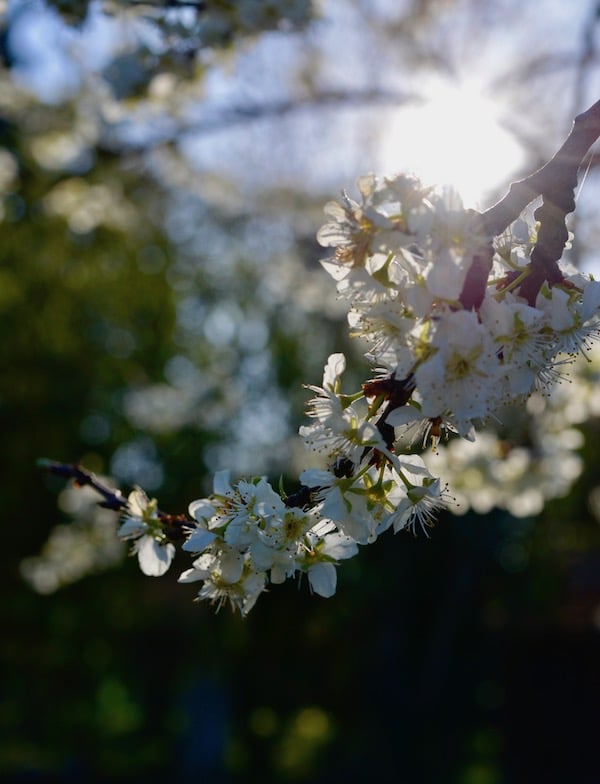
It all started because my team told me I should do another live Instagram video. These live videos are still a new game to me, and I’m not afraid to admit that I find the whole thing slightly intimidating. When I take photos, I can go in and edit before I share. Instagram posts are carefully chosen,; stories are filmed and cropped … but live IG videos are a whole new animal to me.
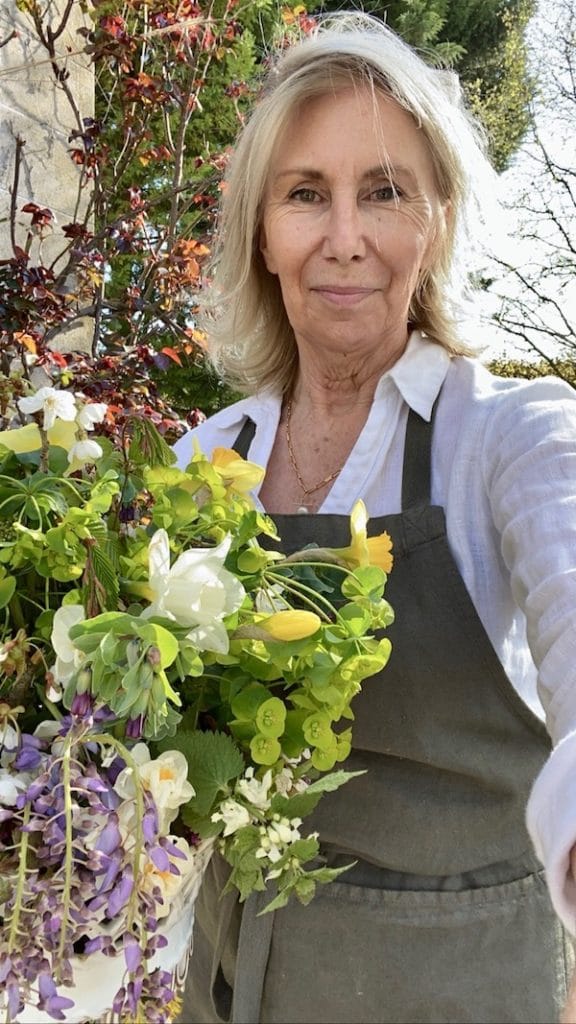
So for the sake of my visual comfort, I love to team up with a friend and cohost a live Instavideo. Today I was extremely happy to welcome Elise Dumas, @thepineapplechef, an extremely talented French photographer and stylist who has already contributed to My French Country Home Magazine.
We wanted to create something for an Easter table knowing that in these strange times, so many people are unable to get out and shop normally, or purchase fresh flowers or other decorations for their table.
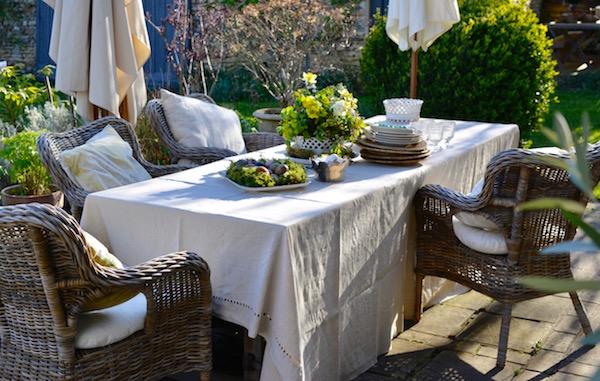
Elise and I both took up the challenge of creating a floral design and some coloured eggs using only ingredients that we already had at home, or that could be easily foraged.
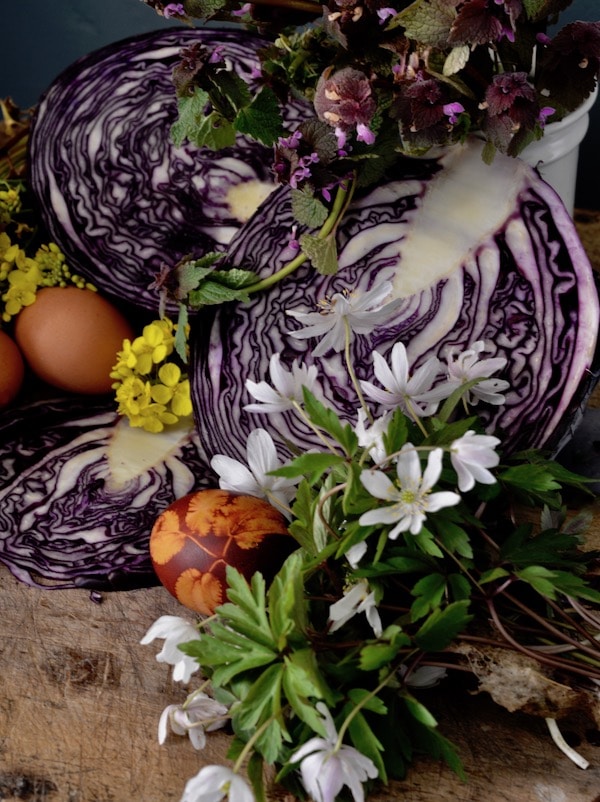
We each set about to dye eggs with natural ingredients. Using red cabbage, turmeric, onion skins and vinegar, we managed to put together some ideas for you. I also experimented with using leaves pressed against the egg and held in place with a short length of pantyhose knotted above and below the egg … yes I know, it is kind of gross but it works.
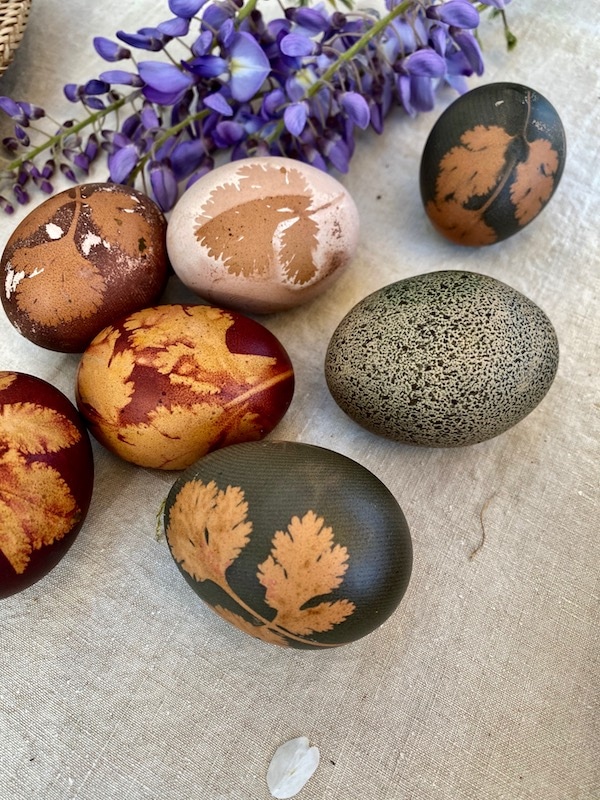
At the end of this piece, you’ll find the ingredients and methods that we used. For the flowers it was the same. Only foliage and flowers that could be foraged or found in the garden.
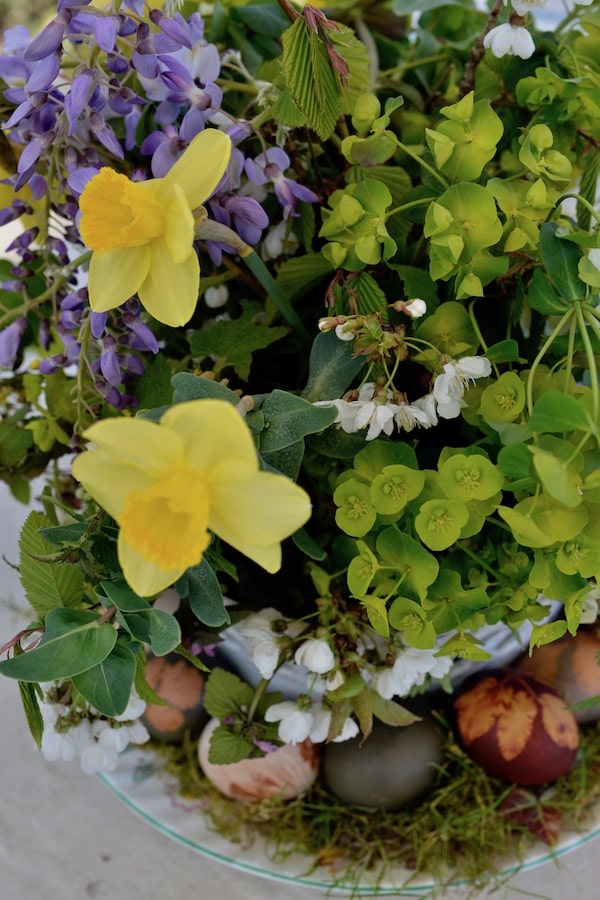
So here is what I have learnt about dying eggs with natural colours:
1 . it’s not a quick fix! dying eggs requires time and space! I had all available pans and bowls in full use as eggs were boiled in colour made from cabbage, onions and much more.
2. Vinegar is an important ingredient, it can change the effect of the colour and make it more permanent. Eggs placed in red cabbage colour turn blue, but if vinegar is added they turn a pretty teal.
3. If you have access to white eggs that’s great! White eggs give you a clean palette to work with. Here in France our eggs are generally brown to begin with, so obtaining an interesting colour effect is difficult.
4. Red fruit will not turn brown eggs pink …. but white! Strangely enough, if you boil brow eggs in a red fruit mixture, they will emerge very nearly white.
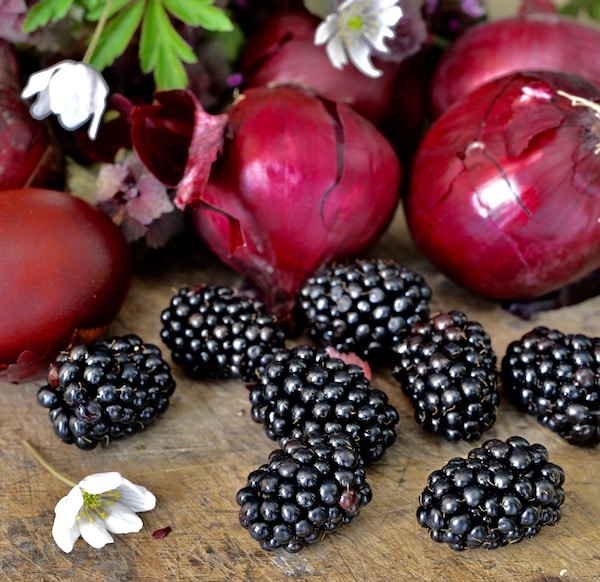
Onion skins –
Simply drop some onion skins into a pan and cover with water. Add the eggs and bring to the boil then simmer for ten minutes before turning off the heat. Leave the eggs for different times: remove some after two hours and others after six or twelve hours. The colour nuance is interesting. Onion skins give the most amazing results , be they yellow or red onions. Remove some eggs sooner than others, as the colour continues to intensify for as long as the eggs are left in the colour.
Red cabbage –
It’s interesting to note that red cabbage makes a deep blue colour, and if you add some vinegar the colour turns to teal. Create the colour by grating or chopping the cabbage into a pan, covering in water and bringing to the boil. Simmer for 15 minutes, strain and let the eggs macerate in the colour for up to twelve hours.
The colour obtained from one cabbage can be shared between two bowls. Add vinegar to one of the bowls to obtain an interesting shade of teal.
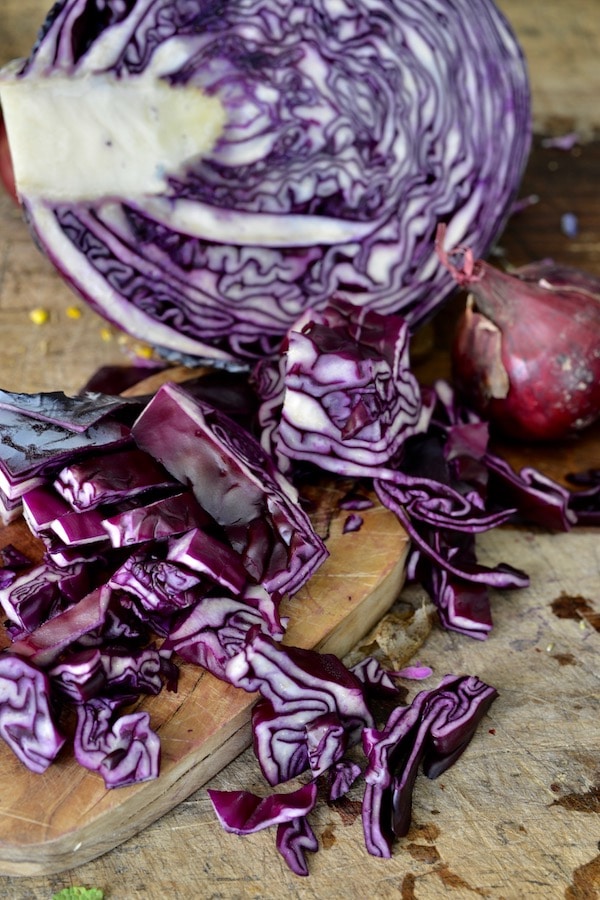
Turrmeric
If used with white eggs then turmeric is a great ingredient! Mix it with white vinegar and bring to the boil. Let the eggs soak in the colour for two to twelve hours, for a gradient colour effect. If you are using brown eggs the result is less spectacular.
Coffee
Boil brown eggs for thirty minutes in coffee for a beautiful deep grey brown colour
Green liquor
Doing the live video with Elise today, we each tried out different ingredients for the egg colour. Elise made a surprising discovery. In France there is a strong green liquor called Get 27. It is mint based, and if you boil your eggs in a pan of this alcohol you will obtain green eggs! Add a little turmeric for a brighter green.
Voila! Hope you enjoy getting creative with some of these ideas. I’d love to hear how it goes!
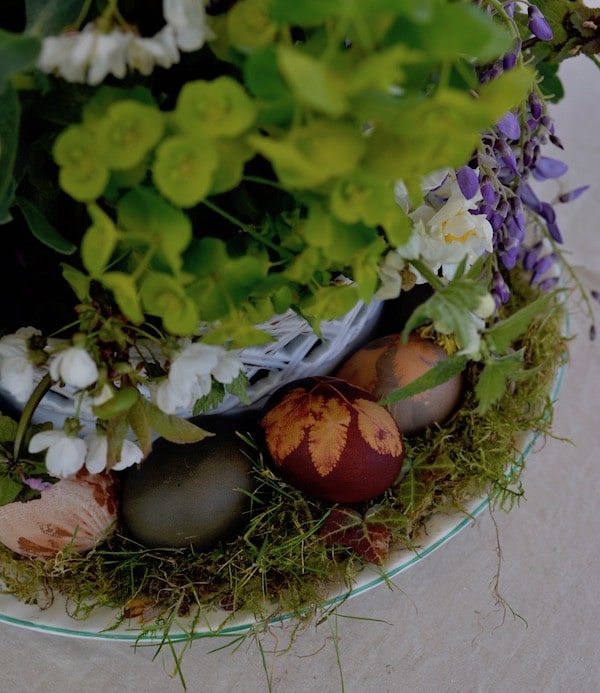

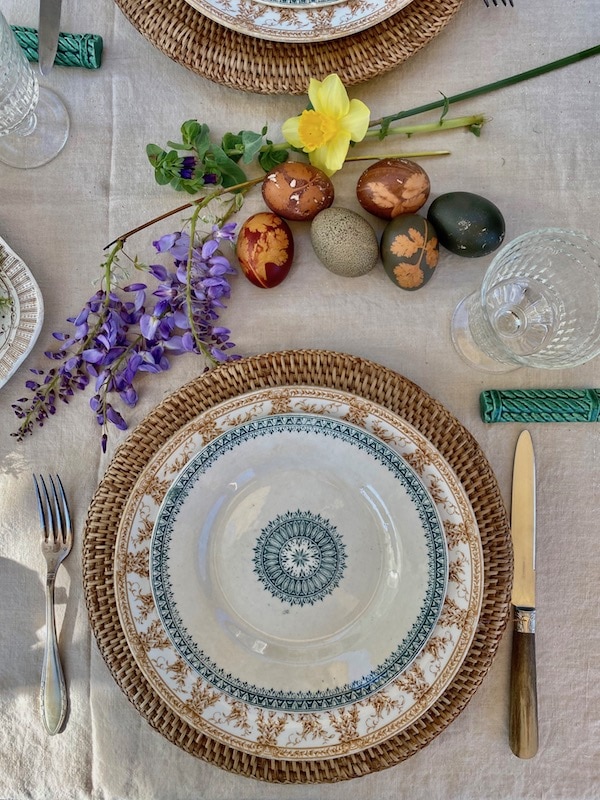


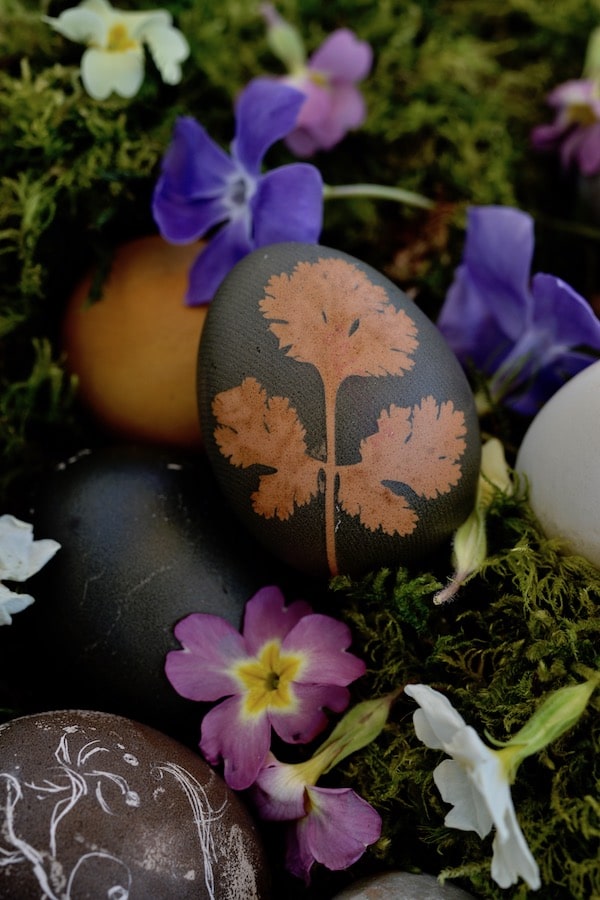
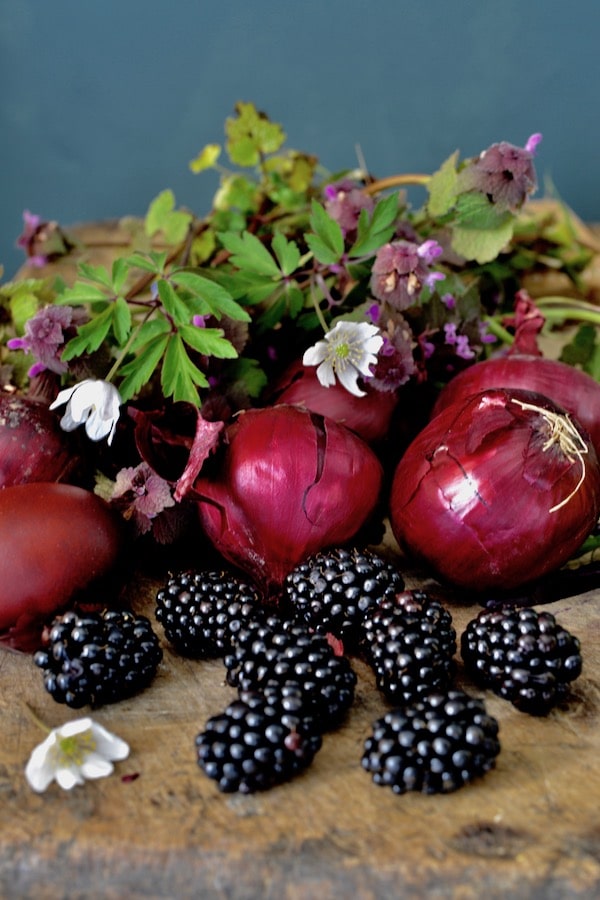
14 comments
Such a thoughtful post. Remaining in shelter for more that 20 days with so many days more to come, I welcomed your ideas and now have some eggs sitting in onion skin water after a 10 minute boil. So curious to see the effect.
Thank you Sharon, it was a wonderful video. Will you be sharing the information about her camera.
A bientot.
Denise
HI Denise, Elise uses a Canon 5D Mark IV. She also said that her lense is a 24:70.
Hope that helps
best
Sharon 🙂
I remember my grandmother making Easter eggs with onion skins. She favored the deep, deep color. I liked them a little lighter.
Old country ways….
How did you make the crackly colored egg?
I ordered the print Chateau Issue of your magazine but still have not received it. I am in the US but could not find it in a store near me as I am quite remote. Should I not worry as it takes a very long time to ship?
You put so many different things together in the pictures yet they are lovely, delicate and beautifully colored. I enjoyed
seeing all of them. Thank you. Here in the New York area, my forsythia is blooming well, daffodils are starting to open, but
as soon as I saw them, I cut to bring inside where I could see them, I love them and of course the color yellow. We have a
way to go yet for more flowers, and I don’t even know if I will be able to safely go anywhere to buy my tomato plants. Somehow
I don’t think so. Thank you for your lovely phoyos.
My grandmother also dyed her Easter eggs with red onion skins. Happy memories -thanks!
What fun! I remember dying Easter eggs as a child, using things like onion skins and cabbage. Don’t think we had turmeric handy then, but there was something else for yellowish colors. Your leaf eggs are lovely, and that crackly-patterned one is very special. Thank you.
I seem to remember picking the bright yellow flowers from gorse bushes to dye our Easter eggs yellow – perhaps that’s what you used.
What did you use to obtain the crackle effect on one of the eggs shown?
The dyed eggs are just amazing in their color and appeal! What is old, is new again. I remember my grandmother and mom would naturally dye eggs-so much more elegant than the neon colors of kits. I wonder if you could put a hole in each egg (scrambled eggs!) so that you could keep your creations from year to year?
[…] LIVE that Elise did with Sharon Santoni (My French Country Home) where they both styled their Easter in Isolation Project (floral arrangements featuring eggs they’d dyed using only ingredients they had around the […]
These are beautiful eggs. I have some eggs sitting in natural dye right now. You inspired me! I have collected avocado pits and marigold leaves to use for dyeing and never got around to it until now. Thank you!